#fleischer brothers
Explore tagged Tumblr posts
Text

If anybody remembers watching this short cartoon from the 30s called Greedy Humpty Dumpty, you’ll probably get the reference. Lol
But damn, I remember getting pretty creeped out as I remembered when I used to watch it from the VHS I had when I was very little and I was pretty scared as I watched it… but then I cheered up and felt a lot better when I pretended that the sun was my guy Sol since ‘sol’ does mean ‘sun’ in Spanish. LMAO
And bro, this is one of the signs that you know better than to mess with Master Sol! LMFAO
#master sol#sol patrol#the acolyte#star wars#lee jung jae#Greedy Humpty Dumpty#humpty dumpty#30s cartoons#fleischer brothers
3 notes
·
View notes
Text
Now watching:
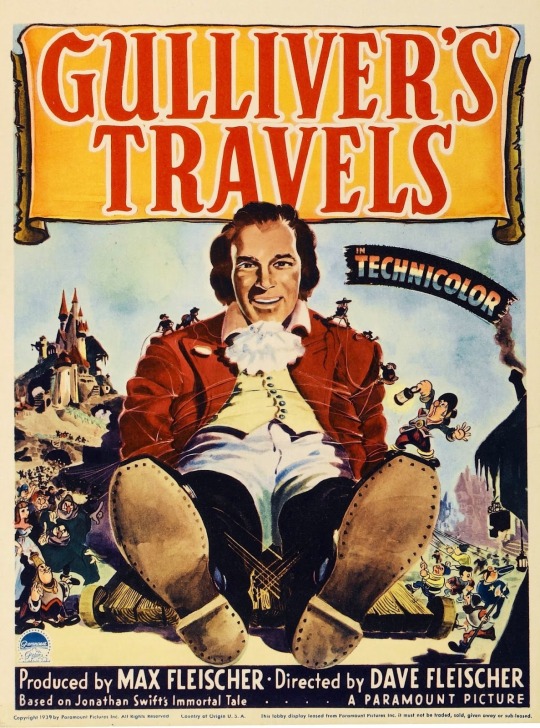
5 notes
·
View notes
Text
'Don't Shoot the President' director Niven Wilson on the chaos and repetition at the intersection of horror and comedy
Niven Wilson shot Abraham Lincoln in 1865, James Garfield in 1881, William McKinley in 1901, and John Kennedy in 1963. Or so he claims. His latest animation, Don’t Shoot the President, suggests that he might be in two minds about that. Before it plays at the fifth annual Halloween Horror Showcase on Indy Film Library, he explains the method behind the madness, and the blurred lines between horror…
#animation#comedy#don hertzfeldt#don&039;t shoot the president#donald trump#fleischer brothers#horror#joe biden#kamala harris#looney tunes#niven wilson#short film
0 notes
Text
Sneaky Dragon Episode 620
Episode 620 - This week, Dave and Ian talk about the toy of sex,, getting on the multiplane, ugly hags, hair shirts, overhyped wars, incoherent rock, uncomfortable viewings, deflating impressions, cults of one, and too much comedy.
Hola, Sneakers! It’s Episode 620 of the podcast no one needed! This week Ian and David talk: phone-y baloney; guys and sex dolls; the toy of sex; the multiplanes of existence; the way of all Fleischer; hag-iography; Snow what; Gulliver unravels; a Swift response; future past; world war wonderings; favouring Currie; Dads’ armies; golf bores; bridge nix; the problem with It’s a Mad, Mad, Mad…
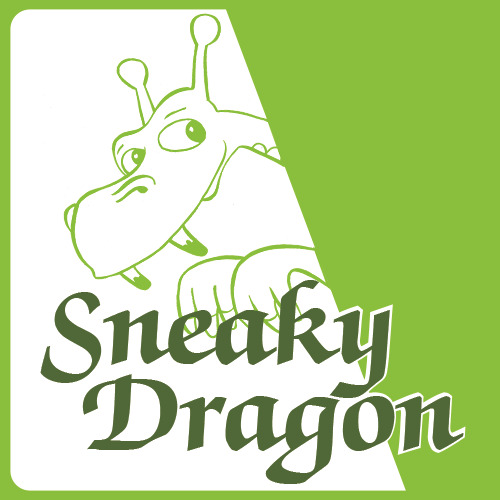
View On WordPress
#Avatar#Chester Brown#Fleischer Brothers#Gulliver&039;s Travels#Hal Hartley#Ian Fleming#It&039;s a Mad Mad Mad World#james bond#Martin Donovan#monty python#Paying For It#Pink Floyd#Recipes for Love and Murder#Snow White and the Seven Dwarfs#Sook-Yin Lee#The Wall#The Who#Tommy
0 notes
Text
Other Characters you can legally use for your Mickey Mouse project

Mickey Mouse is in the public domain, as is Minnie Mouse and Peg-leg Pete. There's some caveats to that, and I talk about that more in this other post, but for now, let's talk about other characters who you can also use to fill out the cast.
These characters should all be in the public domain, though some characters still have treademarks. I'll get into how to use them safely as we go. Anyways, let's start.
Other Disney Characters

Disney obvciously doesn't advertise this, but there's actually quite a few Disney originals who've actually been in the public domain for a while.
The Mad Doctor never had it's copyright renewed, and so it's very technically the first Mickey Mouse cartoon to enter the public domain. Keep in mind, the version of Pluto featured in the short isn't in the domain just yet, but the Doctor himself is free to use.
What's funny is that Disney would later use a version of Doctor for Epic Mickey. Obviously don't use that version of the character.
Aside from the Mad Doctor, we also have Oswald and Ortensia

Yeah, as it turns out, Oswald's been in the public domain for quite a while, but he's still trademarked by Disney. Easy recommendation... use the original "fat" design of the character and have him go by Lucky.
But before Oswald, we have the Alice Comedies
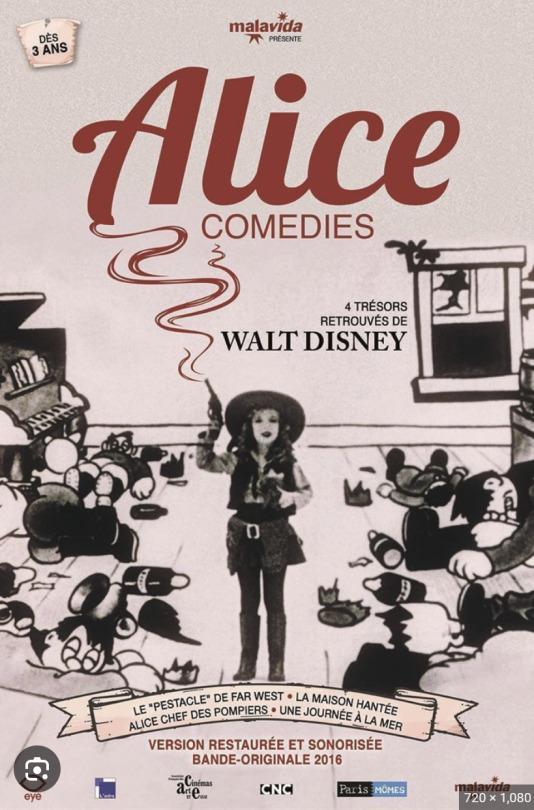
Everything about the Alice Comedies is Public Domain for a long time, and the Disney corporation very rarely acknowlege these characters existence. Which is a shame because These shorts were some of the first shorts Walt ever produced, and they have the unique gimmick of featuring a live action girl in an animated world.
Everybody already knows about Oswald, but nobody talks about Oswald and Mickey's older brother from these shorts, Julius the Cat
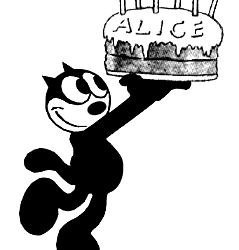
Like... yeah no, it didn't all start with a mouse. Or a rabbit. It started with a cat.
Foxy and Milton Mouse
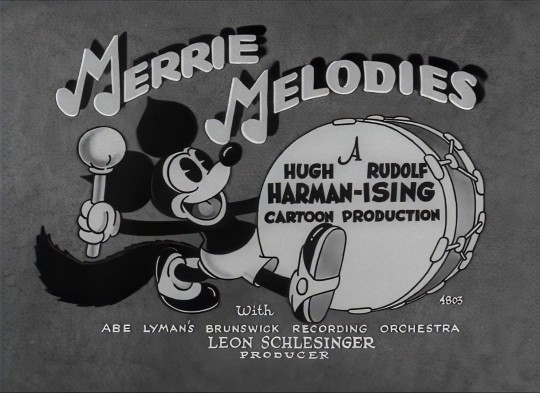
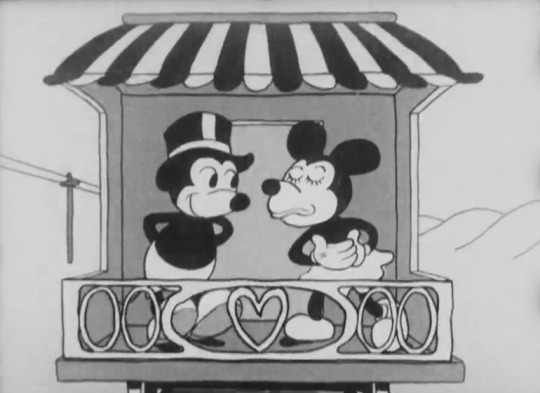
Both Foxy (top) and Milton (bottom, pictured with his girlfriend Rita Mouse) were characters created by Warner Brothers and Van Beuren respectively to cash in on Mickey's success, and both characters are also in the public domain.
In fact, all Van Beuren cartoons are apparently in the public domain, and I encourage you to find their cartoons and use them as you please.
Fleischer Characters

Betty Boop is probably in the Public Domain, but there's a few caveats with this. From what I can tell, the name Betty Boop is trademarked, but the character herself isn't. Most of the old Betty Cartoons are free to use, but newer incarnations, including the versions used in 1985's The Romance of Betty Boop and 1989's The Betty Boop Movie Mystery are still very much under copyright.
To avoid any legal trouble, I have two big recommendations. Although everybody remembers Betty as having Black hair, in one of the few early instances of Betty being shown in color, she's actually depicted as Redhead.
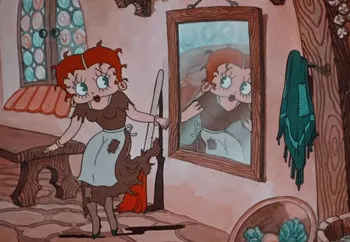
This is Betty Boop in 1934's Poor Cinderella, and her hair color is pretty clearly red.
The other option is to just make her black.
Though there's been some debate as to whether Betty Boop was intentionally modeled after Esther Lee Jones or not, there's still no denying the influence of Jazz on the character. Betty Boop is a Jazz singer and is often depicted dancing to Cab Calloway. Hell, the Betty Boop musical features Jasmine Amy Rogers as the titular character.
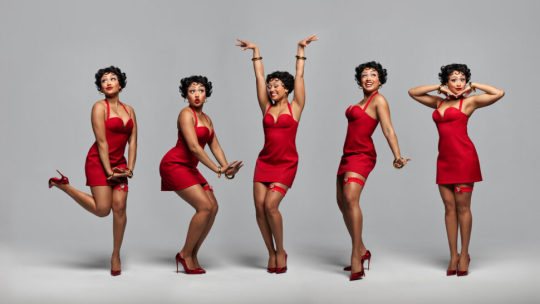
Betty Boop aside, there's an entire world of defunct Betty Boop characters who are definately public domain, including Bimbo and Koko the Clown.
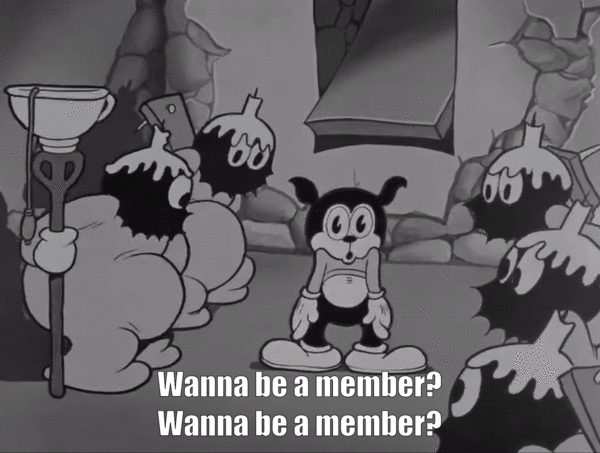
Next year, Popeye's also gonna enter the Domain. So keep an eye out for him too.
Anyways, these are my picks, but obviously this list isn't meant to be comprehensive. There's a ton of old cartoon characters out there who can be freely reinterpreted into newer works. Feel free to add your own favorite public domain cartoon to the list.
#Mickey Mouse#Public Domain#Betty Boop#Koko the Clown#Foxy#Milton Mouse#The Mad Doctor#Oswald the Lucky Rabbit#Alice Comedies#Disney#Walt Disney#Max Fleischer#Warner Brothers.#Cartoons#Animation#Editorial
1K notes
·
View notes
Text
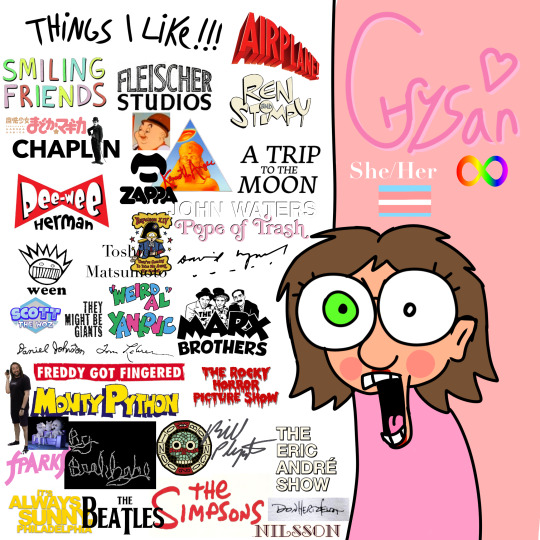
GET TO KNOW ME
#meet me#trans#autsitic#smiling friends#fleischer studios#ren and stimpy#madoka magica#charlie chaplin#frank zappa#chazington#kenneth anger#george melies#pee wee's playhouse#napoleon xiv#john waters#ween band#toshio matsumoto#david lynch#they might be giants#scott the woz#weird al#marx brothers#daniel johnston#tom lehrer#freddy got fingered#monty python#the beatles#the simpsons#rocky horror#sparks
29 notes
·
View notes
Text
youtube
6 notes
·
View notes
Text

Seen in 2024:
The Clown's Little Brother (Dave Fleischer), 1920
#films#movies#stills#shorts#silent#animated#animation#The Clown's Little Brother#Dave Fleischer#Koko the Clown#1920s#cats#seen in 2024
14 notes
·
View notes
Text
youtube
I got the new Fleischer Superman Blu-Ray and immediately made a comparison video.
13 notes
·
View notes
Text
Heads Up! Live Screenings of Vintage Comedy Shorts Coming Your Way in NYC
Great news for lovers of vintage comedy shorts in NYC — there are many live screenings coming up in your near future! It starts today (March 7, 2024, for those of you who don’t look at the dates of what you’re reading) at MOMA with Fleischer Cartoons: The Art and Inventions of Max Fleischer. As I wrote here, Fleischer was my favorite of the vintage cartoon studio, with characters like Popeye,…
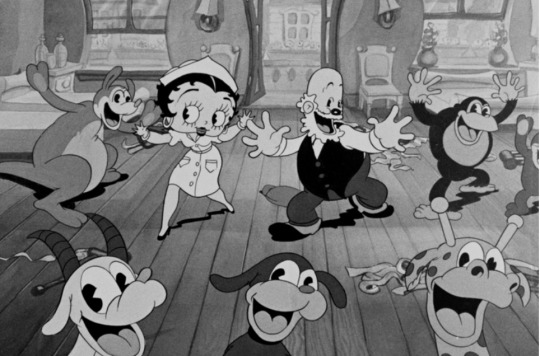
View On WordPress
#Betty Boop#cartoons#Edgar Kennedy#Fleischer#Koko#Marx Brothers#Marxfest#MoMA#Popeye#QED#screening#shorts#Slapstick Show#vintage
2 notes
·
View notes
Text




Dinah (1933)
A Bouncing Ball short which is unique in that it's almost wordless. The first several minutes of the short is animals loading a cargo ship with the music coming from the clicks and clacks of boxes. Then the Mills Brother sing a Barbershop song Dinah.
#bouncing ball#fleischer studios#1933#black and white#Dave Tendlar#dave fleischer#William Henning#the mills brothers
0 notes
Text
Cab Calloway - Minnie the Moocher 1931
"Minnie the Moocher" is a jazz-scat song first recorded in 1931 by Cab Calloway and His Orchestra, selling over a million copies and was the biggest chart-topper of that year. "Minnie the Moocher" is most famous for its nonsensical ad libbed ("scat") lyrics. In performances, Calloway would have the audience and the band members participate by repeating each scat phrase in a form of call and response, eventually making it too fast and complicated for the audience to replicate. The song is based lyrically on Frankie "Half-Pint" Jaxon's 1927 version of the early 1900s vaudeville song "Willie the Weeper".
"Minnie the Moocher" was inducted into the Grammy Hall of Fame in 1999, and in 2019 was selected for preservation in the National Recording Registry as "culturally, historically, or aesthetically significant" by the Library of Congress.
In 1978, Calloway recorded a disco version of "Minnie the Moocher" on RCA Records which reached number 91 on the Billboard R&B chart. "Minnie the Moocher" has been covered or simply referenced by many other performers. Its refrain, particularly the call and response, is part of the language of American jazz. At the Cab Calloway School of the Arts, which is named for the singer, students perform "Minnie the Moocher" as a traditional part of talent showcases.
In 1932, Calloway recorded the song for a Fleischer Studios Talkartoon short cartoon, also called Minnie the Moocher, starring Betty Boop and Bimbo, and released on March 11, 1932. Calloway and his band provide most of the short's score and themselves appear in a live-action introduction, playing "Prohibition Blues". The thirty-second live-action segment is the earliest-known film footage of Calloway. In the cartoon, Betty decides to run away from her parents, and Bimbo comes with her. While walking away from home, Betty and Bimbo wind up in a spooky area and hide in a hollow tree. A spectral walrus—whose gyrations were rotoscoped from footage of Calloway dancing—appears to them, and begins to sing "Minnie the Moocher", with many fellow ghosts following along, during which they do scary things like place ghosts on electric chairs who still survive after the shock. After singing the whole number, the ghosts chase Betty and Bimbo all the way back to Betty's home. In 1933 another Betty Boop/Cab Calloway cartoon with "Minnie the Moocher" was The Old Man of the Mountain.
Calloway performed the entire song in the movie Rhythm and Blues Revue (1955), filmed at the Apollo Theater. Much later, in 1980 at age 73, Calloway performed the song in the movie The Blues Brothers. Calloway's character Curtis, a church janitor and the Blues Brothers' mentor, magically transforms the band into a 1930s swing band and sings "Minnie the Moocher" when the crowd becomes impatient at the beginning of the movie's climactic production number.
"Minnie the Moocher" received a total of 71,1% yes votes!
youtube
1K notes
·
View notes
Text
Comments on Falsettos recording describing people's experience with pre-revival casts & being gay in the 80's and 90's
for @holdwinetosky
“I lived in Manhattan in 1981, met my husband that year. We lived through the AIDS drama of real life on the Upper West Side. This show speaks to me on So many different levels.
Saw this production on Broadway shortly after it opened. Crazy, Intense, Wonderful .
Just like it was in 1990 as Falsettoland at the Lucille Lortel, and when it first moved to Broadway as Falsettos in 1992. Saw the original casts of each, and each production multiple times (1 time with Mandy Patinkin as Marvin), saw the road companies that came to Philadelphia........etc...lol
Freakin Love this Show."
@ rugby8-Philadelphia
“Saw a traveling company which came through Phoenix, AZ. I left Manhattan in '81 as numerous friends were getting ill and shortly thereafter died. This show made me laugh out loud AND cry out loud!”
David Helmstetter (@ davidhelmstetter6661)
“Thank you. You signed my program when I was a kid. I waited by the stage door. My Mom didn't want to see the show at the time. She turned into the most accepting woman and this musical changed my life. xo”
@ castChicagoactors
“An absolute perfect moment in theater... this opened in nyc in 1990!!!!! We all had just lost lovers and friends and it was still raging without any meds. Vowing to "buy the farm arm in arm" was and still is the most moving loving words to hear so beautifully sung”
Jeff Schecter (@ jeffschecter4543)
“I saw Falsettoland at the Theatre De Lys in the Village shortly after my brother Marty died of AIDS, and I have never cried so hard in my life as during "What More Can I Say" and "Unlikely Lovers." I cried so hard that in part of my brain I thought someone might escort me out of the theatre, but there was nothing I could do about it, Michael Rupert you gave voice to everything I felt and there was no stopping it. Thank you thank you thank you. Of course saw the short multiple times on Broadway and afterwards in various productions and I will just never forget this song and that moment until every brain cell I've got has given up and every memory is erased because this is the such an honest statement of what love is all about. To all of you in the show and William Finn I am forever grateful.”
David Fleischer (@ davidfleischer455)
“Thanks for posting, Michael. Today, after 29 years together, my husband and I are legally married in our state of Georgia.”
@ theBestArts
“I have seen many Broadway musicals in my day. Over one hundred original and first run shows since 1980. I can honestly say without heistation that Falsettos in 1992 is the best musical I have ever seen in NY. The ensemble cast, simple set, lyrics, and use of character to tell a story is a perfect example of theatre art. Every theater lover should have seen this one, it is a masterpiece. Chip Zien and Barbara Walsh shine in every performance they give.”
@ muscled57
“I saw March of the Falsettos in 1980 and marvelled at it's musical brilliance and ended up seeing it half a dozen times. Then I saw Falsettoland a decade later which devastated me with it's sensitivity and humanity. Years later I saw a regional production of Falsettos which is the combination of the two shows and was enchanted and remain grateful to Mr Finn for writing such a masterpiece of musical theatre that I could see again and again.”
@ donovan3535
“I was fortunate enough to be reach up and touch Mr. Patinkin at the Golden Theatre in February, 1993, during his run with this amazing show. Those who don't think he made a good Marvin: I have to disagree with you completely. The man is one of the best American talents alive today and gave an amazing performance, in my opinion.”
@ dyabolykyll
“I can't believe I've never seen this before. I've sobbed all the way through the second act. Such strong memories of my dear friend Sammy, who died in 1993. The last time I visited him with my kids, he asked if he could change my daughter's diaper, and afterwards he cried because I wasn't afraid.
It hits so hard for those of us who were young adults when AIDS came on the scene. People were afraid to be in the same room with someone who had it, much less to touch them. It made hand holding and hugs mean so much more."
@ VeracityLH
53 notes
·
View notes
Text
"This looks like a job for SUPERMAN!"
From the Superman short Japoteurs, released September 18, 1942.
This was the first animated short produced by Famous Studios, the successor to Fleischer Studios, after Paramount Pictures took over the studio and removed the Fleischer brothers.
While the production teams and animation style remained essentially intact, there was a distinct change in story style. Five of the eight Famous Studios' shorts were focused on war propaganda stories and, like Japoteurs, depicted America's enemies with hideous racist caricatures.
43 notes
·
View notes
Text
Did you know!
Betty Boop was based on an African American jazz singer named Esther Jones, pictured below!
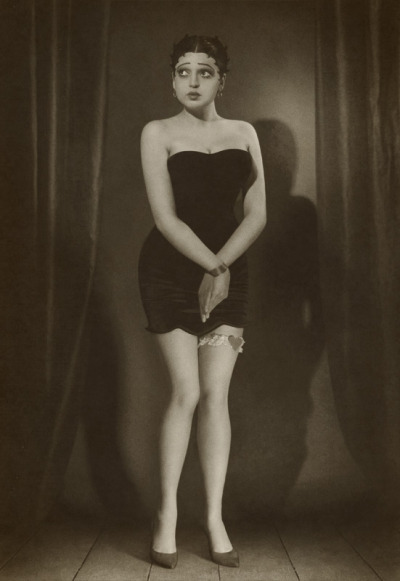
Despite this, Betty Boop has been consistently portrayed as white, and Esther Jones' likeness was used without her permission.
And if you've actually read this far and not just nodded and scrolled on, congratulations! I was lying to you, that entire thing was bunk.
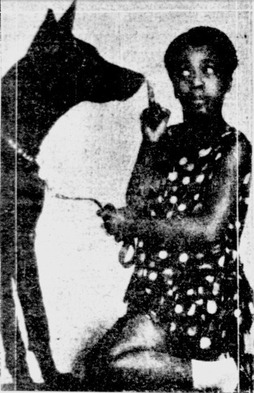
Esther Jones, better known as Baby Esther or Lil Esther, was only a child when Betty Boop made her debut, her exact age is a mystery due to a lack of records. That image I showed you before? That's of a model named Olya P. for the magazine Retro Atelier in 2008. Also Olya’s not even black, she’s white and either Russian or Ukrainian.
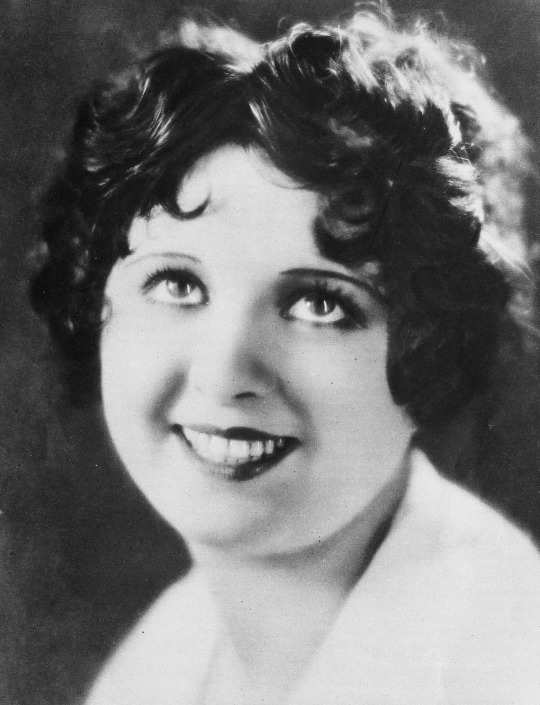
Betty Boop was indeed visually based off a jazz singer and actress, but it was Helen Kane, a white woman. Clara Bow, another white singer, is also sometimes cited as an inspiration, but with less evidence.
It was Helen Kane who found out her likeness was used without permission and filed a lawsuit against Max Fleischer and Fleischer Studios for it. While he would later wholeheartedly admit it, he denied the likeness as part of his testimonies. In the process, he argued that Kane had taken most of her songs and style from Baby Esther. However, according to Wikipedia it’s possible a lot of the evidence for that was fabricated in an attempt to discredit Kane.
So to be more precise, Betty Boop was based off a white woman who might have based her image off a little black girl.

Also, the topic of Betty Boop's intended race gets a little silly regardless given that she was first conceptualized as an anthropomorphic poodle. While it's not exactly unheard of for the 1930s, I don't think they were really focusing on coding her as a specific race at that moment.

The cartoon Minnie the Moocher (remember this) would even depict Betty Boop as coming from a German immigrant family. Many speculated she was even Jewish due to this as well as the Fleischer brothers and her voice actress Mae Questel both being Jewish, but Benjamin Ivry of Forward pointed out that her family's meals were not Kosher so this was unlikely.
Now you might be thinking; okay but what's the harm in portraying Betty Boop as black? Can’t black people reclaim this one character for themselves? And honestly, I kinda agree. Personally I think Betty Boop is one of those characters that can be ANY race, not just white or black, given her ambiguous and stylized features. I love seeing black women cosplaying Betty Boop or her being portrayed as black in art.
However, the reason I bring this up is because I personally think false or misleading information does not make for good representation. Especially when it leads to situations where artists have to explain themselves for giving Betty Boop light skin when the reason cited otherwise is blatant misinformation. Though thankfully the one interaction I have had about it before posting this was very polite.
Not to mention, this kind of thing maybe not necessarily buries but distracts from the very real contributions and accomplishments of black people in Betty Boop's history.
Let's talk Cab Calloway, for example.
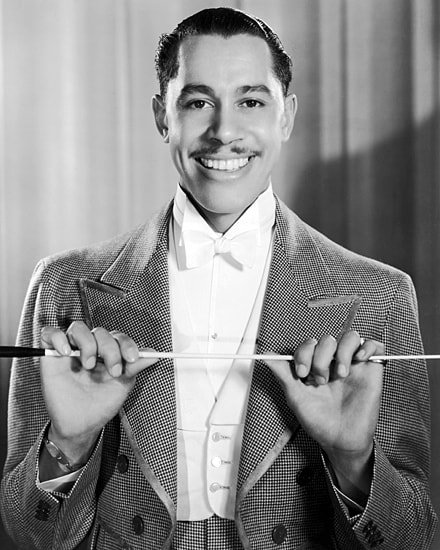
Cab Calloway was a singer and bandleader acclaimed for mixing jazz with vaudeville. He was the first African American to sell one million copies of a single record, and collaborated with Fleicher Studios for three animations, Minnie the Moocher, Snow White, and The Old Man of the Mountain. In these, he would perform a song, the first and last even being directly named after his music, and he was even directly rotoscoped while dancing.


I can't find any sources for who approached who for these collaborations, but I feel its needless to say there's an inherent respect for Calloway and his work in these cartoons. For a black man in the 1930s. And they didn’t even hide it, Minnie the Moocher and The Old Man of the Mountain features live footage of Cab Calloway and his very visibly black band.
These cartoons bleed passion from both the singer and the animators. And if you’ll excuse the sidenote, I watched those cartoons as part of my research and even today his music is still absolutely enchanting.
And Calloway was not immune to racism just because of his success either. He and a friend, Felix H. Payne Jr. were even victims of police brutality by officer William E. Todd in 1945 when they were attempting to visit Lionel Hamptom at the whites-only Pla-Mor Ballroom.
His work matters. Betty Boop was only one small part of his career, the man did a lot in his time, but he brought something truly amazing to the table.
There are real people whose accomplishments deserve to be recognized, but I feel they often get pushed aside in the efforts to make up representation that was never actually there under the false belief that there was none in the first place.
Hell, this entire thing is a discredit to the real life of Esther Jones herself!
She was a literal child who’s date of birth and especially death are unknown. She gained fame in her hometown Chicago which led to her becoming an international celebrity, touring Europe as an honored representation of African Americans alongside Josephine Hall. Then she basically retired as a teenager and disappeared from the public eye.
And what is her memory nowadays? As a sexy flapper that supposedly inspired Betty Boop’s creation.

Even knowing this was false, I had to fight back so much misinformation while making this. This photo right here? I was led to believe this was a photo of an adult Esther Jones, but it’s not! We don’t have photos of her as an adult! This is a completely different, unidentified, woman photographed by James Van Der Zee!
And quite frankly, as a white woman I feel like a jerk having to be the one to tell black people that actually no Betty Boop was based on Helen Kane, not Esther Jones.
So in conclusion, STOP MAKING SHIT UP.
[Sources:
Betty Boop - Wikipedia
Cab Calloway - Wikipedia
Baby Esther - Wikipedia
Модель Оля | BETTY BOOP Wiki | Fandom
Dizzy Dishes (1930)
Minnie the Moocher (1932)
Snow White (1933)
The Old Man of the Mountain (1933)]
#if I got anything wrong in this I take full responsibility#the tough thing about trying to disprove misinformation is that you have to wade through so much of it to get the truth#so sources were also somewhat limited#but yeah this started as me doing research for my Call of Cthulhu investigator#and then my autism led me down a rabbithole#and for the record Fleischer Studios' cartoons were not free of racism#they apparently had less compared to other studios but still had offensive caricatures of black and native people#but I struggled to find exact sources for it so I didn't think it would be a good idea to include#I haven't seen every talkartoon and mostly just watched the ones I mentioned#Old Cartoons#Betty Boop#Esther Jones#Baby Esther#Helen Kane#Cab Calloway#Max Fleischer#Fleischer Studios#Essay#my post
35 notes
·
View notes
Text





Wednesday Infidelity Blaze! Plus some other stuff. Truth be told I drew all this sometime in March or April but didn’t feel like uploading it until now.
No idea what Blaze’s “Mickey” counterpart would be. But perhaps Alice and Julius from the oft-forgotten Alice Comedies. Idk might expand on this concept in the future.
1) Her design, both in black and white and in color
2) Her neutral and losing icons. Might change these in the future.
3) Her design inspiration. Which was mainly from Sally Swing (a character made by the Fleischer Brothers attempting to cash in on the swing style of dance and music at the time…who sadly never took off as well as they hoped :( ). As well as a bit of Olive Oyl from Popeye.
4) A sketch Senpai x Blaze (not canon of course based on that one scene from In a Heartbeat. With michellemouse’s WI!Senpai. Love their design of him so much, what a cute patootie :3
#friday night funkin#fnf oc#friday night funkin oc#wednesday infidelity#fnf fanart#friday night funkin fanart
26 notes
·
View notes